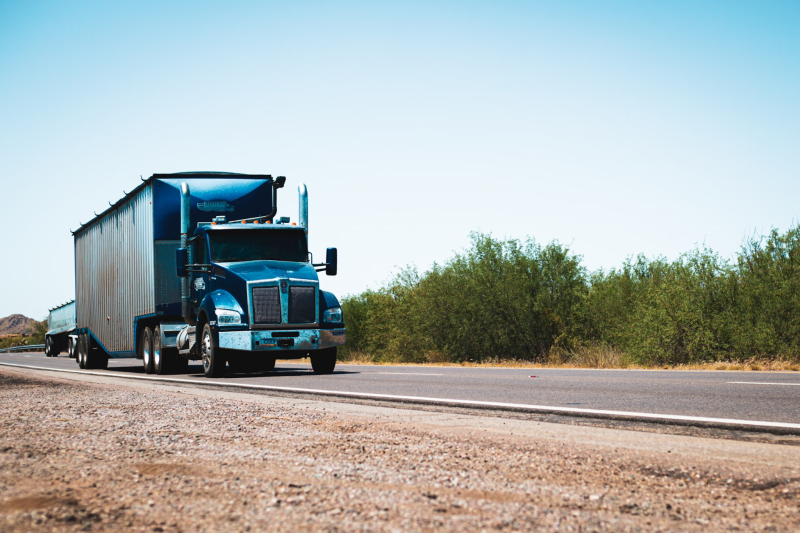Debris-Hauling and Dump-Truck Fleets: Auto Liability Gaps in Post-Construction Cleanup

Cleanup starts when the others leave. The crews pack up, the tools disappear, and the heavy trucks arrive to clear what remains. It feels like the safe part of the job, but for dump-truck and debris-hauling fleets, the final phase is often where liability begins. Uneven surfaces, scattered materials, and last-minute workers on foot create conditions where slow speed does not mean low risk.
Cleanup sites are not quiet zones
Even after construction ends, the hazards stay. A backing truck may clip leftover scaffolding or dent a job trailer. Cracked pavement near a foundation trench can shift under weight and tilt a load. A driver may nudge a roll-off bin, only to find it sitting closer to a parked car than expected. These are not highway collisions. They are tight, low-speed contacts that spark claims anyway.
What makes them complex is location. Cleanup crews often operate on private ground. That means unclear lines of responsibility, mixed-use access, and no obvious traffic flow. A carrier may get named in a claim because a site lacked cones or painted lanes. The property owner might shift blame to the hauler. With no public road and no neutral space, liability gets harder to assign.
When silence turns into exposure
Post-construction jobs often happen fast. Dispatch sends trucks to the next site with little notice. Drivers arrive at crowded lots. Equipment blocks views. Materials sit in the wrong place. In most cases, there is no walkthrough and no time to plan.
When something goes wrong, the carrier may need to show clear evidence that drivers were prepared. Legal outcomes often reflect whether the carrier demonstrated documented safety routines rather than focusing solely on speed or extent of damage. They ask whether the company made an effort to prepare. This includes:
- Sharing basic site sketches or hazards in advance.
- Allowing extra time for maneuvering or backup entry.
- Setting rules for mirrors, cones, or curb checks.
- Recording quick safety briefings before arrival.
Fleets that track these actions have stronger defense options. That is why many safety leads keep a file that links each type of cleanup site to driver instructions and policy endorsements.
Auto Liability needs to work at the edge
Dump-truck operations push into places that standard policies do not always anticipate. Low-speed zones on soft dirt. Empty lots near public sidewalks. Temporary lanes created for demo crews. These are not standard roads, yet claims from these areas still fall under Auto Liability.
Carriers who manage these risks through STAR Mutual RRG gain more than coverage. They join a licensed insurance company owned by its policyholders. This mutual Risk Retention Group structure connects businesses that face similar exposures and allows them to shape how protection responds to their field realities. Endorsements are managed on a secure platform that adapts as projects evolve. When site demands change, updates happen quickly through proprietary tools built for speed. Control stays with the members who depend on it most.
Losses are not random
Operational data often reveals patterns in cleanup-related incidents, especially in repeat-use locations with poor layout or subcontractor turnover. One developer uses a tight alley for debris removal. Another has curbs that collapse under axle weight. Some rotate subcontractors weekly, which means drivers meet a new crew at each site. After three or four close calls in similar places, safety managers begin to map risk locations.
Once patterns are clear, habits can change. The same site that caused repeat claims might only need a back-in rule, a curb cone, or a driver briefing. When those habits are documented, underwriters take notice. Fleets that show control often reduce premiums over time. They also resolve disputes faster when proof is ready.
Overlooking the fine print can be costly
Some Auto Liability policies limit how coverage applies off-road. Others exclude incidents on private lots or impose special deductibles. Clauses tied to loading zones or temporary setups may create delays or denials. Brokers should review sample claims with the fleet’s safety lead to catch blind spots before they create exposure.
Keeping gaps from turning into holds
Construction clients may raise insurance requirements without notice. A cleanup job that needed one million last month might now ask for two. If the certificate does not match, freight gets held. Revenue stalls. That is why carriers review contract terms every quarter and align policy documents with active routes.
Preparing before the busy season avoids late limit increases and billing delays. Claims from post-build jobs may be small in damage but large in disruption. Getting ahead of both paperwork and field habits helps keep the exit phase smooth.
Cleanup is not the end
The job does not end when debris leaves the site. For fleets hauling scrap, dirt, and demo loads, risk continues until the last turn is made. Auto Liability that adjusts to off-road and post-project exposure helps prevent surprises. With flexible control inside STAR Mutual RRG, carriers can match coverage to their exact conditions and keep operations moving even in the most improvised cleanup zones.





